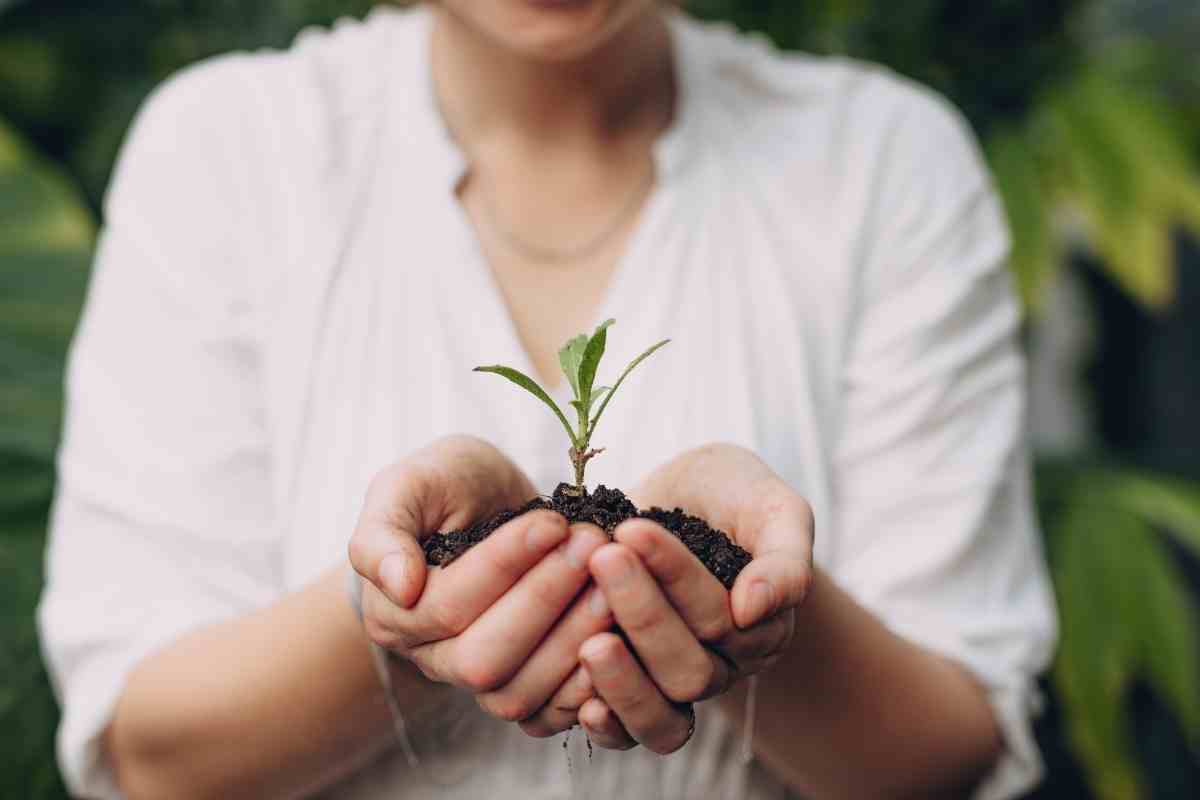Lime impacts the soil by increasing the pH and balancing the acidity.
Additionally, lime is probably the most cost-effective approach to supplement calcium or magnesium.
Having a well-balanced pH is critical for optimal plant health and yield.

However, adding lime can also upset the balance of nutrients already there and end up damaging your plants.
The USDA Organic Rules prohibit Certified Organic producers from using either burnt-lime or hydrated-lime only. However, this law does not apply to organic household gardeners. Therefore, if you have a small backyard garden and wish to supplement it with lime, it is okay.
Why Don’t Organic Gardeners Use Lime?
Every time you introduce something foreign to your soil other than compost or organic waste, you risk disturbing the delicate equilibrium that has been established in your garden.
As a result, most of the helpful bacteria that make nutrients available to plants will be eradicated.
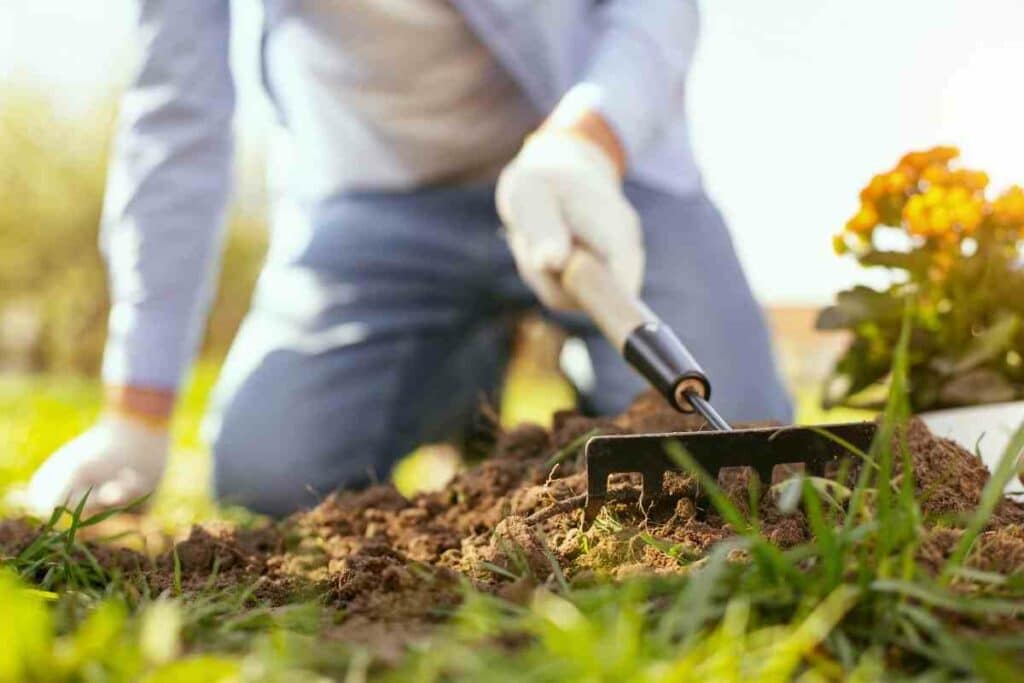
Burnt lime may eliminate some of the beneficial microbiological activity in your soil, and it may also burn plant roots under extreme situations.
Additionally, hydrated lime can leach away nutrients beyond the reach of plant roots.
A buildup of lime in the soil can harm land production.
The process is usually gradual, and you will only notice the effects after 3 years. In the first year, you rarely see it. However, when the soil gets too alkaline, plants are unable to use the available nutrients.
Additionally, excess salts can build up in the soil.
As a result, plant development is slowed, and leaves become yellow, a disease known as chlorosis.
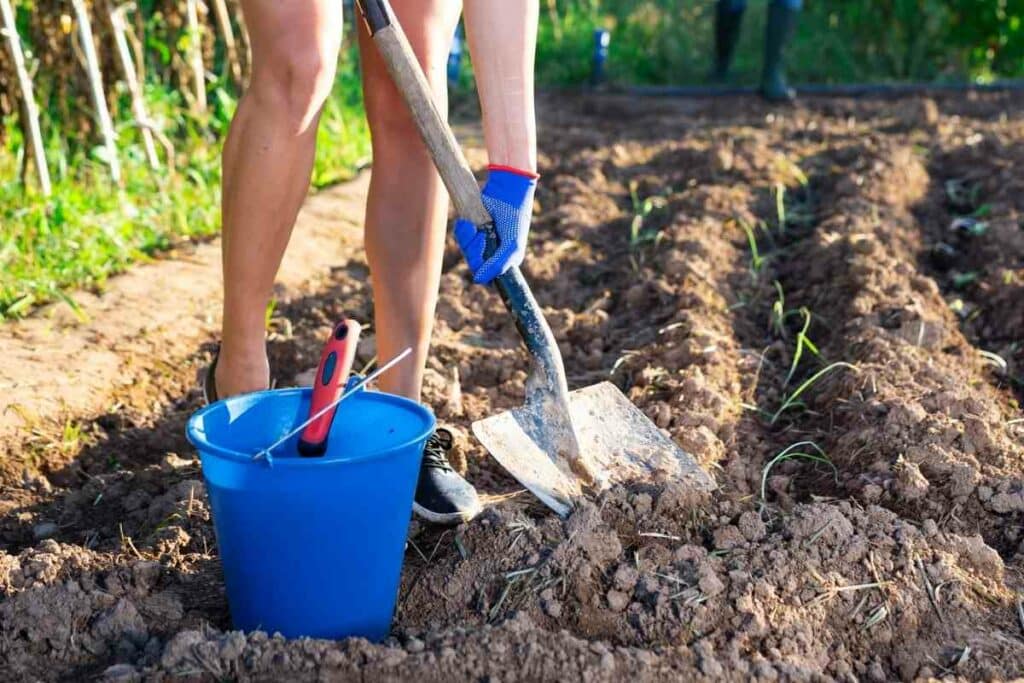
Lime also endangers the user.
That is why whenever you handle lime, you need to use extra protection for your skin and eyes is essential.
This is especially so if you use either burned or hydrated lime.
| Advantages of Using Lime | Disadvantages of Using Lime |
|---|---|
| Enhancing the soil’s physical, and biological qualities | Excessive limewater might limit root development and produce tip edema owing to hydrolysis. |
| Improved nitrogen-fixing by legumes | Nutrients such as iron, zinc, phosphorus and, manganese become unavailable to the crop if the soil becomes excessively alkaline. |
| Increasing nutrient availability to plants | It can limit the availability of micronutrients such as Zn, Fe, and others. |
| lowering harmful levels in the soil | It has an antagonistic impact on the availability of phosphorus and potassium. |
| Increasing the efficacy of certain herbicides | It has negative environmental impacts. |
| Crops are supplied with calcium, magnesium, and other minerals. |
Why Organic Gardeners Should Use Lime
The best time to utilize lime is when you want to raise your soil pH.
If you notice slow growth and your plant leaves turning yellow, it might indicate that your soil is too acidic.
When the soil is too acidic:
- It decreases the availability of certain essential nutrients such as phosphorus.
- Furthermore, it increases the availability of other nutrients to toxic levels, particularly aluminum and manganese.
The addition of lime raises the pH level to a more neutral range.
Liming is critical for soil fertility.
Lime is a soil enhancer that balances soil pH by neutralizing acids and enabling microorganisms and earthworms to flourish.
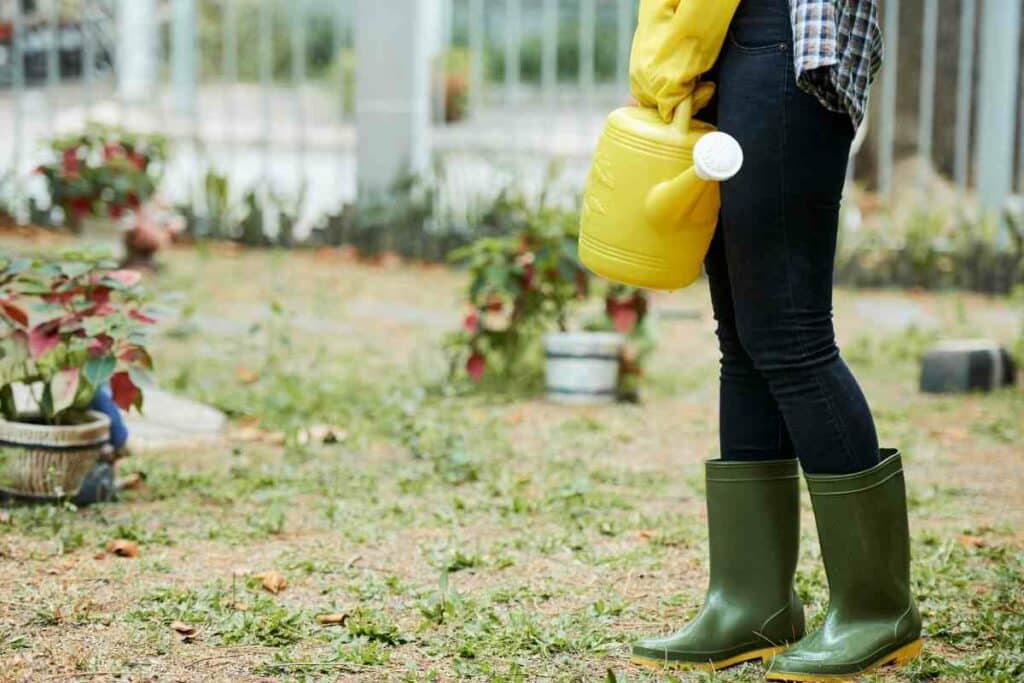
These microorganisms are essential as they decompose organic debris, enhancing nutrient cycling in the soil.
Agricultural lime (a calcium-containing product derived from limestone, gypsum, or dolomite):
- Raises soil pH
- Decreases the solubility of hazardous components
- And promotes nutrition availability to plant roots
By adding lime to plants, you may improve soil pH by neutralizing and lowering manganese and iron levels, which cause soil to become acidic.
Lowering manganese and iron levels can reduce the chance of plants becoming toxic, allowing them to develop and produce at a faster rate.
Lastly: Lime aids in the biological nitrogen fixation of legumes and overall microbial activity.
How Should Organic Gardeners Use Lime?
Soil quality is an essential factor in plant production.
Plant health is heavily reliant on the pH balance of the soil.
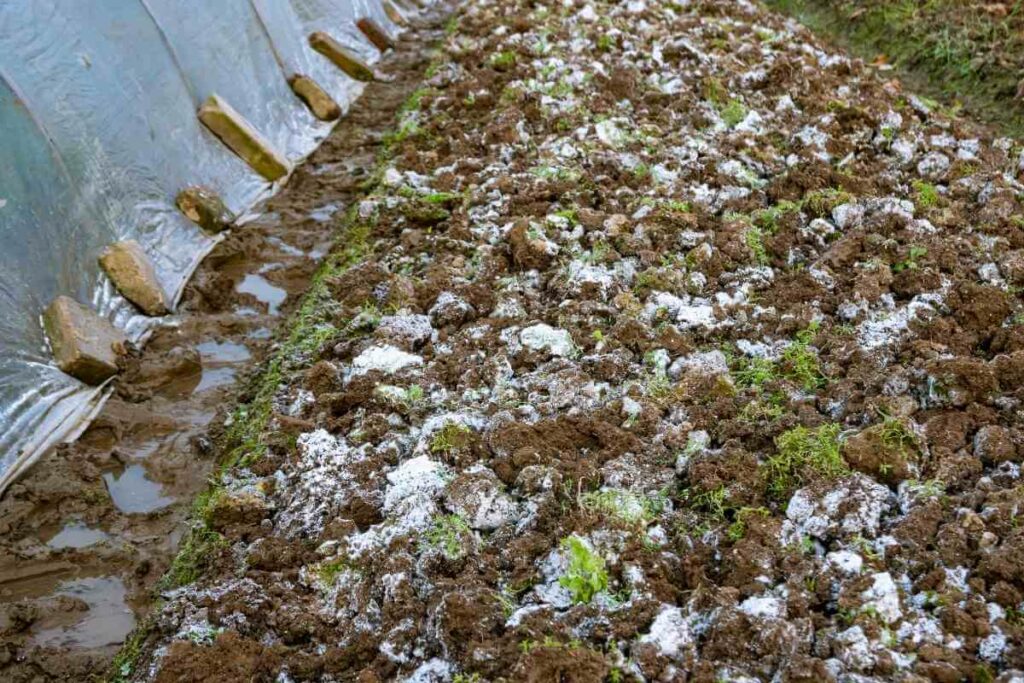
When the soil gets excessively acidic, the yield will be adversely affected.
Plants suffer from significant nutritional deficits due to acidic soil, resulting in decreased yields.
Fortunately, there is a method for monitoring and correcting an acidic soil condition. When soil becomes acidic, it is advisable to apply lime.
Lime may be added to acidic soil whenever you desire.
The optimal time, though, is while you are preparing the soil.
Fall is an excellent time since it gives the soil plenty of time to integrate all of the lime. The soil should be suitable for planting by spring.
The amount of lime required by your soil is determined by its original pH. Without a proper soil test, estimating the amount of lime is a trial and error procedure.
A home pH test kit can tell you how acidic the soil is, but it does not take the kind of soil into account.
A competent soil testing laboratory’s soil analysis results provide precise suggestions customized to your soil’s demands.
Which Lime Should Organic Gardeners Use?
Organic gardeners should be conversant with two forms of lime:
- Agricultural lime
- Dolomite lime
Both varieties of lime have calcium; however, dolomite lime also contains magnesium.
While adding lime will incorporate these nutrients into your soil, it is primarily used to alter soil pH.
Dolomite Lime
Also known as calcium magnesium carbonate, Dolomite lime contains around 20% calcium and 10% magnesium.
These minerals regulate soil pH and supply vital nutrients to plants.
Dolomite may also include sodium- but it should not be more than 0.2%. Too much sodium can cause your soil’s salinity to shift, harming your plants.
To use it, begin by determining the current pH of the soil. A pH of 6.0 to 7.4 is ideal for most plants.
If your soil has a pH of 5.9 or below, it is too acidic and needs to be supplemented with lime.
When you buy dolomite garden lime, it is usually crushed into granules that can be coarse or extremely fine, or it could be made into pellets, which is not required but makes application simpler.
Some plants thrive in acidic soils with a lower pH; therefore, check on the demands of your plants before adding the dolomite.
However, applying lime at a ratio of 250 mL (1 cup) for every 50 square feet is generally accepted.
Agriculture Lime
Agricultural lime, also known as “aglime,” is simply limestone or chalk crushed into small pieces and used to adjust the soil’s acidity levels.
Agricultural lime is used because it has a large quantity of calcium, which balances the pH levels of the soil.
Furthermore, agricultural lime can improve the ability of plants to absorb critical minerals from the soil.
Agricultural lime is often dispersed in its pure, dry “calcitic” form, which means that the product is mainly composed of calcium carbonate.
Good News: One advantage of agricultural lime is that once adequately incorporated into the soil, subsequent applications are not required. Nonetheless, it takes time before aglime can effectively impact your soil’s pH.
Final Thoughts
The use of lime is very controversial. Some people claim that it is beneficial, while others argue that it does more harm than good.
For example, experts state that adding lime can upset the balance of nutrients.
They instead recommend that people use organic matter and let nature take care of everything. For this reason, the USDA Organic Rules prohibit Certified Organic producers from using lime.
That said, liming is one of the most effective ways of increasing your soil’s pH. Therefore, if you are a subsistence organic farmer, you can use lime.
